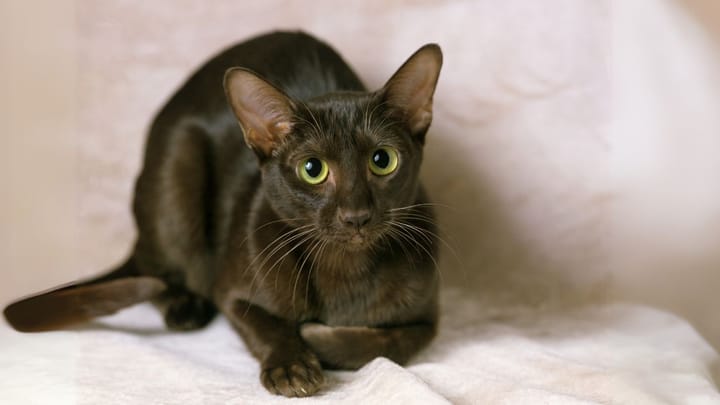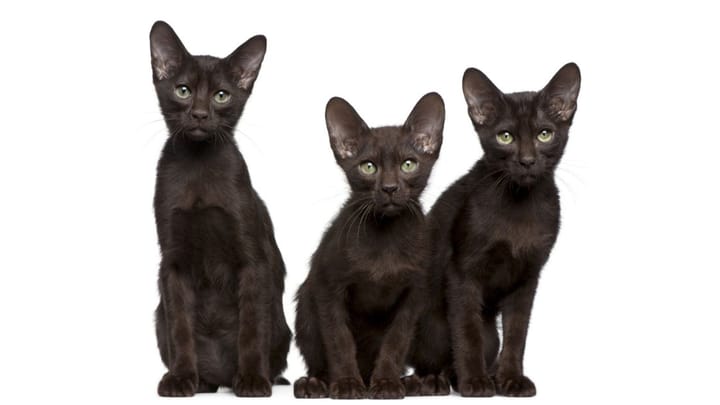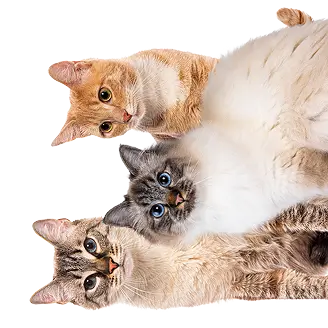Havana Brown
Other names : Chestnut Brown Foreign, Chestnut Oriental Shorthair, Chestnut Havana


The Havana Brown is a beautifully elegant house cat with a soft, shiny coat of a rich mahogany brown. Its name probably comes from a breed of rabbit whose fur is exactly the same colour, or it could have been inspired by the famous Havana cigars. These cats are sociable, affectionate and intelligent.
|
Life expectancy |
The Havana Brown has a life expectancy of between 15 and 20 years |
|
Temperament |
|
|
Adult size |
Female
Between 9 and 11 in
Male
Between 10 and 12 in
|
|
Adult weight |
Female
Between 4 and 7 lb
Male
Between 7 and 9 lb
|
|
Coat colour
Chocolate / mahogany Only one colour is accepted by the breed standard: a beautiful, solid mahogany brown that is deep and chocolatey, with no white fur. |
Brown |
|
Type of coat
Short and soft, shiny and silky |
Short |
|
Eye colour
The most intense green possible, but all shades are accepted. |
Green
|
|
Purchase price |
The Havana Brown costs approximately 300£ |
Havana Browns are very friendly cats and remain loyal to those who give them affection. They are a relatively rare breed.
More details about the Havana Brown
Havana Brown: Origins and history
Havana Browns are originally from Thailand, formerly known as the Kingdom of Siam. They are the result of a cross between the Tonkinese and Burmese breeds. At the time, it was said that they brought luck and protection against evil spirits. They disappeared from Europe after they were imported there because of a preference for cats with blue eyes, such as the Siamese.
After the Second World War, the Baroness Miranda Von Ullman wanted a chocolate Brown cat. With the import of Burmeses to England, the interest in this kind of colour was growing. Breeders began to pursue new reproduction programmes that crossed chocolate Siameses with black cats, Russian Blues or black Persians, thus introducing the plain chocolate brown pattern. From then, the English Siamese Cat Club would only accept Havana Browns with green eyes.
It was in 1952 that the first Havana Brown, called Elmtower Bronze Idol, was born, serving as ancestor of all Havana Browns that followed since. The Governing Council of the Cat Fancy (GCCF) recognised the name Chestnut Foreign Shorthair in 1958, but in Europe they are known by the name Havana Brown. Their arrival in California dates back to 1976.
The Siamese type, elongated and muscular, was developed by the English, whereas the original, rectangular and muscular type was developed by the Americans.
Physical characteristics of the Havana Brown
The Havana Brown is an average-sized cat, with a robust, firm and muscular body that is rectangular in shape. They have compact, oval paws and long legs. Their foot pads are pink. Their tails are average length and fine all the way along. They have a well-balanced, proportional head that is longer than it is wide with a flat forehead. Their eyes are large, oval and always green. Their ears are large and long, pointing straight forward.
They have a distinctive square, well-defined muzzle with a broad nose and a pronounced indentation between the forehead and the nose. This indentation is called the stop, and makes it looks as though their snout has been stuck on. The whiskers match the colour of their fur beautifully.
Havana Brown: Characteristics
Havana Brown: Behaviour
Breed compatibility Havana Brown
Havana Brown: Purchase price
On average, the purchase price of a Chestnut Brown kitten is around £300, with some variation according to lineage, breeding, age or even sex. For your monthly budget, you should allow around £25 per month to meet their needs by giving them a quality diet and ensuring they stay in good health.
Havana Brown: Shedding
Light
They shed very little fur.
Havana Brown: Grooming
Swiss Mountain Cats don’t need any specific kind of grooming. A polish once a week with a flannel or cloth is enough to keep their beautiful coat silky and brilliant.
Havana Brown: Health
Havana Browns can live between 15 to 20 years if you provide the necessary care for their wellbeing.
They are resistant and don’t suffer from any diseases in particular.
Havana Browns are, however, sensitive to the cold and enjoy the warmth and comfort of their home.
These kitties shouldn’t have any tendency to put on weight if they are given the correct food, in the right quantity for their size.
There are no known hereditary diseases, and no particular conditions are associated with this breed. However, they can eventually develop the same conditions as all other cats, such as oral diseases.
When bred, these cats produce litters of around 3 to 5 kittens. They cannot be paired with individuals of other breeds.





